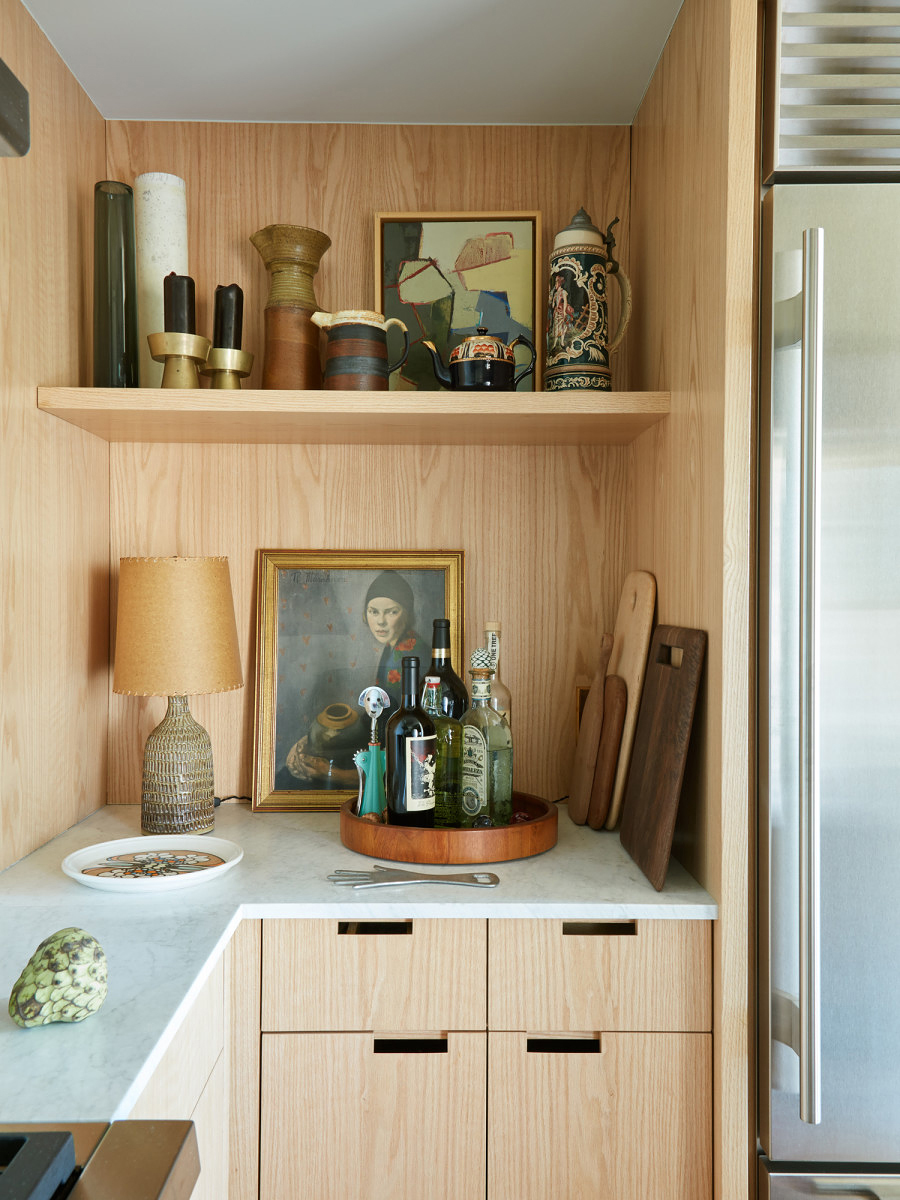We may earn revenue from the products available on this page and participate in affiliate programs.
For hands-on advice from designers and pro DIYers, plus more scrappy before-and-after transformations, subscribe to Reno. Let your in-box do all the hard work—for now.
If you’re reading this now, we’re assuming you have already considered the pros and cons of stock and semi-custom cabinets and decided to go a more personalized route: full-on custom. While it is true that this is the most expensive option you can choose when renovating your kitchen, the potential far outweighs the sticker shock. Bespoke boxes can be anything you want, from traditional Shaker style to antique brass, and they can be made to fit your walls down to the eighth of an inch.
Then you can’t forget the bells and whistles, like integrated lighting and pull-out trash cans. “It’s crazy how quickly the price goes up,” Home Advisor’s expert, Dan DiClerico, told us of his own experience designing a kitchen from scratch. “But I don’t regret it for a second.” Once you stop seeing dollar signs and start seeing the possibilities, read on for what it really means to invest in custom kitchen cabinets.
The Cost

Because custom cabinets require a skilled carpenter, the general price range falls between $500 and $1,500 per linear foot, but that really depends on the type of material you choose. The hardness of the wood and the detail in the grain tend to drive up that number.
Be wary of overspending if this isn’t your forever home. According to a report from Homes.com, those who spend around $22,000 on their reno net an 80 percent return on their original investment when they sell. People who spend more than $60,000 only recoup 60 percent.

Another fun fact: Updating stock IKEA cabinets with Semihandmade doors for a semi-custom twist isn’t always that much less expensive than going fully custom. Designer Lauren Bradshaw learned that it was only a $5,000 difference on a project she recently completed in Nashville, drawing her in the direction of custom.
The Potential

So what does personalization really look like? It can mean letting wood shine through in unexpected places, like door handles (peep the hardware-less ones above from Bradshaw’s reno). But having total control over the measurements allows you to dictate what happens inside your cabinets, too. Photographer Teri Lyn Fisher, one part of the duo behind Spoon Fork Bacon, designed one drawer in her Los Angeles space specifically for long utensils (think: skewers, tongs, and silicone brushes) and another for shorter tools like can openers.

And don’t think we forgot about the pantry: the workhorse of any kitchen. You can do things like in this space below, where you have some visibility with the drawer openings but everything isn’t just sitting out on open shelves and creating visual clutter. Not pictured in the Solstice Interiors-designed space below: A pocket door with fluted glass that separates the nook from the main kitchen.

Tall utility cabinets that can hold anything from bulky appliances to brooms are also on the rise. Specify the dimensions to meet your room’s exact ceiling height so no square inch goes left unused.
The Work-Arounds

If fully custom cabinets aren’t in the cards, we’ve got good news: You can achieve a look that’s 100 percent you in other small ways. Refinishing (i.e., changing the paint and finish) and refacing (replacing the door and drawer fronts) are great options if your existing cabinets are dated but you don’t have the funds for a full demo. Psst: Elizabeth Stamos saved $35,000 by doing this in her space.
If storage is what you lack, consider premade stand-alone cabinets (you can buy one or a few and arrange them in the room however best suits your layout). Line the backs with wallpaper for a fresh touch—no one will ever be the wiser.

